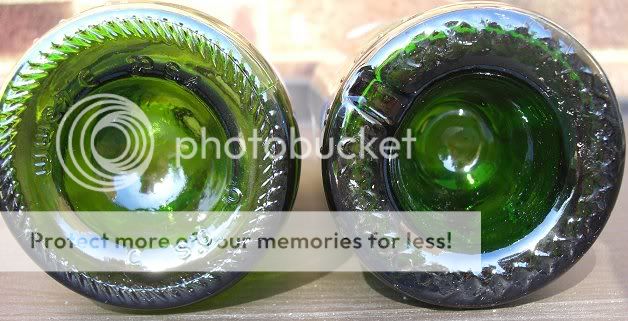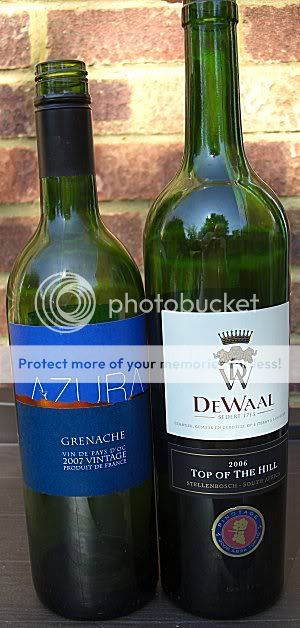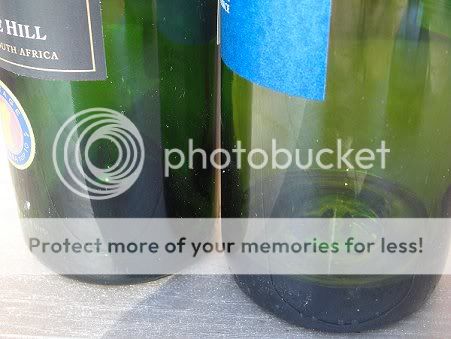What is the dimple in wine bottles for?

We’ve all wondered why there is a depression in the bottom of a wine bottle. I remember asking my Dad at the meal table when I was a kid He told me that it was for the sediment to collect. But the wine my parents were enjoying was a white wine and there wasn’t any sediment ...

Now I am much older and I have drunk a great many bottles and discussed the matter many times. I have researched the question and I have an answer of sorts.
First, let us call the depression by its proper name. It is formally known as a punt, although some know it as a kick-up.
Let’s look at the theories.
It collects sediment. So you take an ancient red wine from your cellar and stand it upright for sediment to settle. It will slide down the sides of the dome and collect in a ring around the edge of the bottom of the bottle. I am not sure how this will help when pouring the wine, but it sounds an impressively technical reason so we won’t dismiss it out of hand. Talking of hands…
It is to enable sommeliers to hold the bottle when serving. A sommelier is the name for a member of restaurant staff responsible for wine service. Top restaurants employ professional sommeliers; less expensive restaurants give the title to any waiter who pours wine. The sommelier holds the bottom of the bottle in the palm of their hand, steadying and gripping it with their thumb in the punt. But did glassmakers and wineries go to all that trouble just to let sommeliers make an impressive display? I’ll rate this as unlikely.
It adds strength to the bottle. I like this reason. It feels right. And yet, and yet… There are plenty of cheap wine bottles that do not have any punt not to mention the many other types of bottles with flat bottles.

It makes the bottle more stable on an uneven surface. It is true that a bottle with a punt is more stable then a flat bottomed bottle on a rough surface. Another possible.
It allows bottles to be stacked, neck in punt. Well, I dismissed this out of hand until I visited Champagne. That’s how they stack their bottles, especially in gyro-pallets, which are huge bins containing hundreds of bottles which are inverted to shake sediment down to the neck before removal.
There’s another use for punts when making Champagne and sparkling wine. They stack bottles on their side on top of each other many feet high in big blocks while the secondary fermentation takes place. If the pressure is too high for the glass, then the bottle breaks. That ring of glass around the punt is usually where the bottle shatters, shooting out the punt and leaving the sides of the bottle intact and supporting all the bottles above and around it. Thus a bottle can break and not cause the stack to crash down. I’ve seen the evidence of such odd broken bottles in place in stacks in cellars in Champagne.
But look at the photo to the right. Doesn’t one of the bottles look more impressive, and indeed bigger? The contents are exactly the same at 750ml. Wineries like to put their premium wines in bottles that proclaim their contents. These bottles are bigger, heavier, made from thicker glass and they have a deeper punt.
There is an old saw that says that the, the deeper the punt the better the wine and there is some truth in it because bottles with deep punts use more glass and are more expensive.
But whatever the historical reason was for the punt it is lost in time. Nowadays the punt is in the bottle because it is traditional and the depth of it is a marketing decision.

Punts rise like islands in the dregs of last night's wine
Peter F May is the author of Marilyn Merlot and the Naked Grape: Odd Wines from Around the World which features more than 100 wine labels and the stories behind them, and PINOTAGE: Behind the Legends of South Africa’s Own Wine which tells the story behind the Pinotage wine and grape.
which features more than 100 wine labels and the stories behind them, and PINOTAGE: Behind the Legends of South Africa’s Own Wine which tells the story behind the Pinotage wine and grape.

Now I am much older and I have drunk a great many bottles and discussed the matter many times. I have researched the question and I have an answer of sorts.
First, let us call the depression by its proper name. It is formally known as a punt, although some know it as a kick-up.
Let’s look at the theories.
It collects sediment. So you take an ancient red wine from your cellar and stand it upright for sediment to settle. It will slide down the sides of the dome and collect in a ring around the edge of the bottom of the bottle. I am not sure how this will help when pouring the wine, but it sounds an impressively technical reason so we won’t dismiss it out of hand. Talking of hands…
It is to enable sommeliers to hold the bottle when serving. A sommelier is the name for a member of restaurant staff responsible for wine service. Top restaurants employ professional sommeliers; less expensive restaurants give the title to any waiter who pours wine. The sommelier holds the bottom of the bottle in the palm of their hand, steadying and gripping it with their thumb in the punt. But did glassmakers and wineries go to all that trouble just to let sommeliers make an impressive display? I’ll rate this as unlikely.
It adds strength to the bottle. I like this reason. It feels right. And yet, and yet… There are plenty of cheap wine bottles that do not have any punt not to mention the many other types of bottles with flat bottles.

It makes the bottle more stable on an uneven surface. It is true that a bottle with a punt is more stable then a flat bottomed bottle on a rough surface. Another possible.
It allows bottles to be stacked, neck in punt. Well, I dismissed this out of hand until I visited Champagne. That’s how they stack their bottles, especially in gyro-pallets, which are huge bins containing hundreds of bottles which are inverted to shake sediment down to the neck before removal.
There’s another use for punts when making Champagne and sparkling wine. They stack bottles on their side on top of each other many feet high in big blocks while the secondary fermentation takes place. If the pressure is too high for the glass, then the bottle breaks. That ring of glass around the punt is usually where the bottle shatters, shooting out the punt and leaving the sides of the bottle intact and supporting all the bottles above and around it. Thus a bottle can break and not cause the stack to crash down. I’ve seen the evidence of such odd broken bottles in place in stacks in cellars in Champagne.
But look at the photo to the right. Doesn’t one of the bottles look more impressive, and indeed bigger? The contents are exactly the same at 750ml. Wineries like to put their premium wines in bottles that proclaim their contents. These bottles are bigger, heavier, made from thicker glass and they have a deeper punt.
There is an old saw that says that the, the deeper the punt the better the wine and there is some truth in it because bottles with deep punts use more glass and are more expensive.
But whatever the historical reason was for the punt it is lost in time. Nowadays the punt is in the bottle because it is traditional and the depth of it is a marketing decision.

Punts rise like islands in the dregs of last night's wine
Peter F May is the author of Marilyn Merlot and the Naked Grape: Odd Wines from Around the World
You Should Also Read:
What is a Case of Wine?

Related Articles
Editor's Picks Articles
Top Ten Articles
Previous Features
Site Map
Content copyright © 2023 by Peter F May. All rights reserved.
This content was written by Peter F May. If you wish to use this content in any manner, you need written permission. Contact Peter F May for details.


